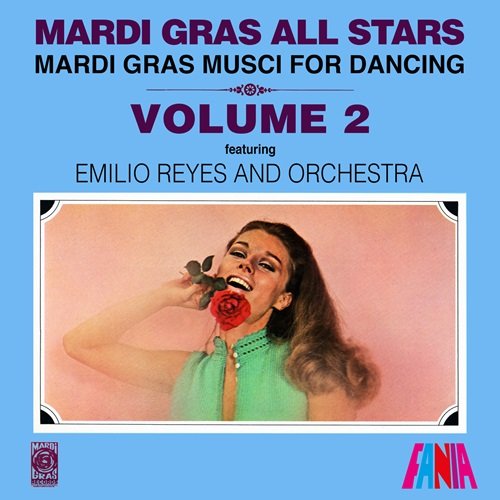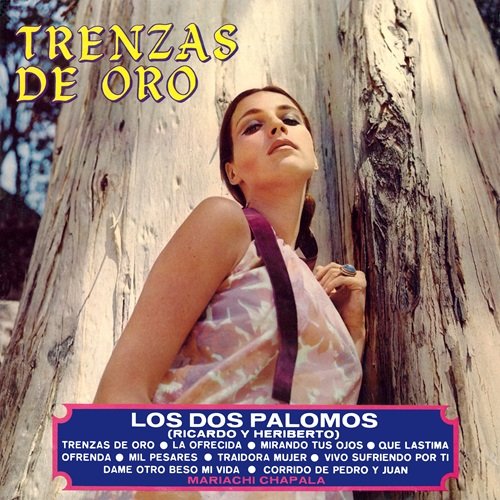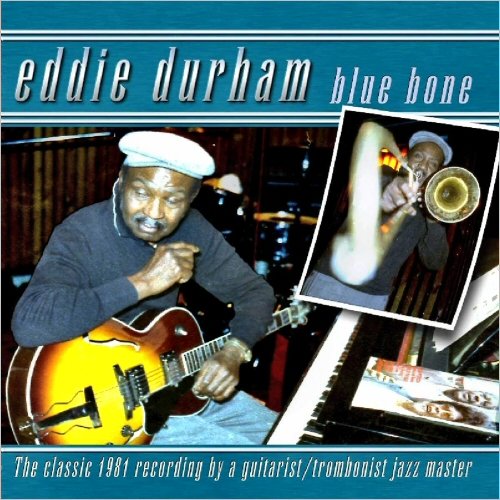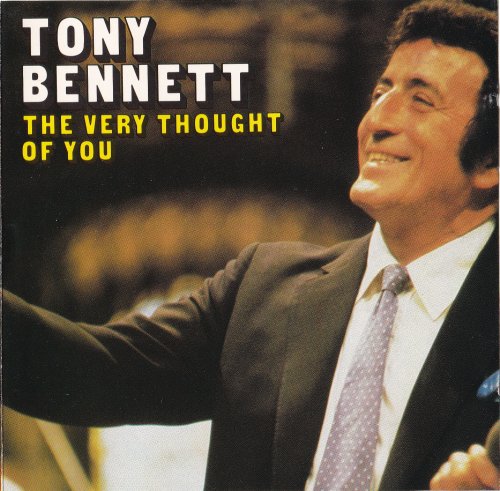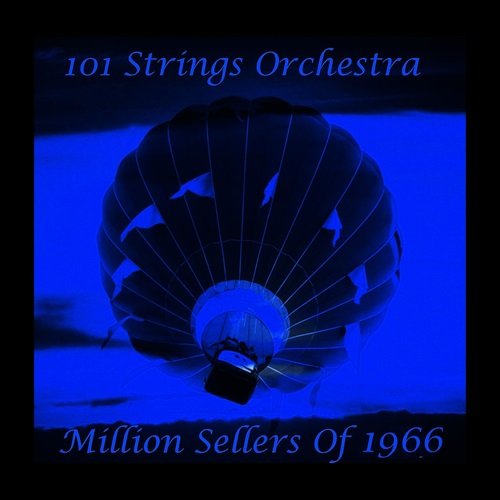Chen Xueyuan - Joseph Haydn: 8 Mid-Late Keyboard Sonatas and Variations Hob. XVI, XVII (2024)
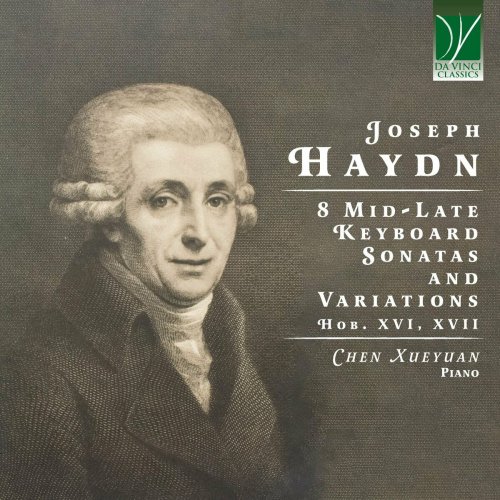
Artist: Chen Xueyuan
Title: Joseph Haydn: 8 Mid-Late Keyboard Sonatas and Variations Hob. XVI, XVII
Year Of Release: 2024
Label: Da Vinci Classics
Genre: Classical
Quality: FLAC (tracks)
Total Time: 149:35 min
Total Size: 469 MB
WebSite: Album Preview
Tracklist:Title: Joseph Haydn: 8 Mid-Late Keyboard Sonatas and Variations Hob. XVI, XVII
Year Of Release: 2024
Label: Da Vinci Classics
Genre: Classical
Quality: FLAC (tracks)
Total Time: 149:35 min
Total Size: 469 MB
WebSite: Album Preview
CD1:
01. Sonata in F Major, Hob. XVI: 23: I. Allegro moderato
02. Sonata in F Major, Hob. XVI: 23: II. Adagio
03. Sonata in F Major, Hob. XVI: 23: III. Finale. Presto
04. Sonata in D Major, Hob. XVI: 24: I. Allegro
05. Sonata in D Major, Hob. XVI: 24: II. Adagio
06. Sonata in D Major, Hob. XVI: 24: III. Finale. Presto
07. Sonata in E Minor, Hob. XVI: 34: I. Presto
08. Sonata in E Minor, Hob. XVI: 34: II. Adagio
09. Sonata in E Minor, Hob. XVI: 34: III. Finale. Molto vivace
10. Sonata in C Major, Hob. XVI: 35: I. Allegro con brio
11. Sonata in C Major, Hob. XVI: 35: II. Adagio
12. Sonata in C Major, Hob. XVI: 35: III. Finale. Allegro
13. Sonata in D Major, Hob. XVI: 37: I. Allegro con brio
14. Sonata in D Major, Hob. XVI: 37: II. Largo e sostenuto
15. Sonata in D Major, Hob. XVI: 37: III. Finale. Presto ma non troppo
16. Sonata in E-Flat Major, Hob. XVI: 49: I. Allegro
17. Sonata in E-Flat Major, Hob. XVI: 49: II. Adagio e cantabile
18. Sonata in E-Flat Major, Hob. XVI: 49: III. Finale. Tempo di Minuet
19. Sonata in C Major, Hob. XVI: 50: I. Allegro
20. Sonata in C Major, Hob. XVI: 50: II. Adagio
21. Sonata in C Major, Hob. XVI: 50: III. Allegro molto
CD2:
01. Sonata in E-Flat Major, Hob. XVI: 52: I. Allegro moderato
02. Sonata in E-Flat Major, Hob. XVI: 52: II. Adagio
03. Sonata in E-Flat Major, Hob. XVI: 52: III. Finale. Presto
04. Capriccio in G Major, Hob. XVII: 1 :Acht Sauschneider müssen seyn:
05. Variations in A Major, Hob. XVII: 2
06. Variations in E-Flat Major, Hob. XVII: 3
07. Capriccio (Fantasia) in C Major, Hob. XVII: 4
08. Variations in C Major, Hob. XVII: 5
09. Variations (Sonata) in F Minor, Hob. XVII: 6
10. Variations in D Major, Hob. XVII: 7
11. Adagio in G Major, Hob. XVII: 9
12. Allegretto in G Major, Hob. XVII: 10
13. 12 Easy Pieces, Hob. XVII: Anhang
Many artworks are stored and exhibited today in museums. These institutions are a blessing for art lovers, who can admire a number of paintings of disparate genres within a relatively short space of time and a single place. However, when – for instance – a thirteenth-century altarpiece depicting the Annunciation, a nineteenth-century portrait of an aristocratic lady, and an Impressionist marina are displayed in a similar fashion, their respective contexts are entirely lost. Artworks have not only an intrinsic beauty of their own, but, normally, also a function, a purpose; the painting’s size, colours, and style, are all – at least partially – determined by the intended goal, collocation, and social context.
Something in this line also happens with music; today’s concert scene and, even more clearly, the recording market, tend to flatten the contextual differences, and to propose to the listener the musical work as an abstraction. And this, very frequently, is detrimental to the full appreciation of the work itself.
Haydn’s keyboard Sonatas are probably among the victims of this approach. They are frequently compared to those by Mozart or Beethoven (both of whom thought very highly of Haydn and admired him intensely), and they are (too rarely, alas) played in public concerts, without considering some important elements. First, practically none of them had been created as a piece for public performance, or to be played in anything akin to a modern concert hall. They were mainly pieces conceived for the enjoyment, artistic delight, and pianistic improvement of aristocrats or wealthy bourgeois families. This destination determines some of their main qualities: their pervasive irony, for instance, which is better suited to a gathering of refined connoisseurs than to a large audience, on which it will probably be lost. Or the transparency of their writing, which hardly fills a large concert hall, but which instead draws infinite small variants, intended as hidden gems to be discovered primarily by the player. Or the extraordinary success in obtaining the best musical result with the smallest technical effort, so as to be delightful without being demanding, amusing without being arduous, vibrating without being virtuosic.
Furthermore, the umbrella term “Sonata” is applied, on formal grounds, to a great quantity of pieces (upwards of sixty, in Haydn’s case) which are very heterogeneous in terms of ambitions, size, emotional palette, technical demands, and, perhaps above all, instrumental destination. Haydn’s long life extended over a period of great changes, which saw the transition from Baroque keyboard instruments such as the clavichord and harpsichord to the new fortepiano. And whilst Mozart and Beethoven, both Haydn’s juniors by many years, quickly took advantages of the possibilities of the new instrument, also in terms of public performances which affirmed their status as virtuosi, Haydn was uninterested in a performing career. He was an accomplished keyboard player since his childhood studies, and he began each day improvising and playing his keyboard, on which he found inspiration for works for any kind of performing forces. He said: “My imagination plays on me as if I were a keyboard… I really am just a living keyboard”. However, as an employee of an aristocratic household for most of his life, Haydn was not stimulated to pursue novelty and originality at the keyboard for their own sake, but rather to fulfil the demands of his own aristocratic patrons and of the market of upper-class music lovers.
In 1773, Haydn composed a set of six Sonatas, which he was to issue in print in 1774: a momentous time for the musician, who – until then – had not authorized the publication of any of his works. This was also due to the terms of his contract with the Esterházy family, who had a kind of copyright on their employees’ creations; unsurprisingly, therefore, the six Sonatas were dedicated to Prince Esterházy, whose imprimatur was indispensable.
The opening movement of F-major Sonata Hob. XVI/23 is reminiscent of Baroque toccatas, with its brilliant figurations and its changing mood. The second movement, instead, is a so-called Siciliano, i.e. a moderately slow piece characterized by the minor mode and by a particular rhythm (a dotted 6/8). The Sonata closes with a playful and joyful, ironic and therefore quintessentially Haydnesque Finale based on dance rhythms developed in a Sonata form.
The Baroque influence is perhaps even more evident in the opening movement of D-major Sonata Hob. XVI/24, which displays a dense texture of counterpoint and imitation, declined, however, in a robust, energetic fashion rather than with severity or seriousness. This brilliancy is efficaciously contrasted with the pathetic, sober, and intense second movement, which, once more, seems to look back to Baroque topoi, while articulating them within a more modern expressive framework. Irony and Haydn’s typical gusto for surprising the listener are found abundantly in the third movement, which displays an almost jazzy taste for syncopations. Their effect is further heightened by Haydn’s amused and amusing play with the listener’s expectations in terms of musical form and structure.
A very different approach is that adopted in E-minor Sonata Hob. XVI/34. In turn, it belongs in a set of Sonatas, three in this case, which saw the light in London in 1783. London was to be the city which probably appreciated Haydn most and which contributed substantially to his fame and to his professional fulfilment. While its publication date is ascertained, it is surmised that its actual composition took place many years before, perhaps as many as ten or more. The first movement, a brilliant and intense Presto in compound time, is tightly woven and tends to revolve around the opening musical idea, which recurs again and again with doleful insistence, countered only by the relative quiet and tenderness of the second theme in the relative major key. This, i.e. G major, is also the key of the second movement, which seems almost an essay in the art of ornamentation, very much in the vocal style. This impression is further corroborated by the presence of an instrumental recitativo, which paves the way for a purposefully (and explicitly) naïve third movement. Here Haydn employs the Italian word innocentemente (innocently) as an expression marking, pointing out the movement’s connection with the world of folk music and the value it expresses.
Sonata Hob. XVI/35 was published within yet another set of (six) Sonatas, in 1780; in this case, the printer was based in Vienna. It was the legendary Artaria, who was to become Haydn’s reference publisher in the years to come – and who was to issue many first editions of the Viennese masters. This Sonata has been played by a plethora of amateurs and piano students, because – not unlike Mozart’s KV 545 – it manages to miraculously keep its technical demands rather low, while achieving the full status of a masterpiece in terms of beauty and elegance. Even from the compositional viewpoint, it is a piece to be admired – for instance in its characteristic economy of thematic means which does not conflict with variety and fascination. The F-major slow movement is deceivingly simple but also touching in its limpid intensity; the concluding Menuet is as amusing and ironic as it is possible with such essential musical means.
D-major Sonata Hob. XVI/37 belongs in the same set, which was dedicated to two sisters, i.e. Franziska and Maria Katherina von Auenbrugger. They were excellent pianists, who earned deservedly the praise of Leopold Mozart. This Sonata has always been particularly successful, thanks to the sparkling vivacity of its outer movements, where the influence of Scarlatti’s brilliant style is evident. Like the E-minor Sonata, this too is concluded by an “innocentemente” Finale, whilst the central movement is full of composure and solemnity, in the fashion of an old-style Sarabande or a Baroque French Overture.
Sonata no. 49 was written in two stages. The first movement and the menuet saw the light in 1789, whilst in the spring months of 1790 the composer completed the traditional structure of a Classical keyboard Sonata with a slow movement. Two ladies are connected with this fascinating work. One is the dedicatee as she appears in the autograph, i.e. Maria Anna Jerlischeck, who worked in the Esterházy household and was soon to marry Johann Tost, another musician. The other, however, is the work’s “true” dedicatee, i.e. Maria Anna von Genzinger, one of the persons who were closest to Haydn. He wrote to her: “This Sonata in E flat, entirely new and forever meant only for Your Grace”. She was delighted with the work and dedication, although she requested the composer to simplify the complex hand-crossing passages. This simplified version, if Haydn ever created it, has not reached us.
Sonata no. 50 was probably the last to blossom from Haydn’s pen, and, like Hob. XVI/52, it was written in London, on the occasion of Haydn’s second stay in the English capital. Both were conceived for yet another lady pianist, i.e. Therese Jansen Bartolozzi. Haydn was a witness at her wedding with Gaetano Bartolozzi, and he thought highly of her professional musicianship. This C-major Sonata is almost symphonic in its concept, and it overflows with Haydn’s typically witty humour. In this work, Haydn’s interest in the developments of the fortepiano is visible in his experiments with pedalling, probably influenced also by the novelties of the British Broadwood pianos.
Another area in which Haydn was constantly experimenting was that of harmony; in both this Sonata and in Hob. XVI/52, the concept of “close” or “remote” key seems almost surpassed. This E-flat Sonata, one of the most complex and ambitious in Haydn’s oeuvre (and one where Mozart’s influence is clearly discernible) is not afraid of venturing to the key which is farthest from E-flat major: the remote key of E major is found both in the first movement and as the main key of the second movement.
In this double CD, other shorter works are also found. In some of them, Haydn’s inclination to fun is most evident (as happens with the works on folk themes), whilst others – such as, most notably, the F-minor Variations – are among the most intense and expressive pieces he ever wrote. Together, these disks allow us to experience the full palette of Haydn’s creativity and of the countless moods he was able to evoke with his keyboard works.
Chiara Bertoglio
Something in this line also happens with music; today’s concert scene and, even more clearly, the recording market, tend to flatten the contextual differences, and to propose to the listener the musical work as an abstraction. And this, very frequently, is detrimental to the full appreciation of the work itself.
Haydn’s keyboard Sonatas are probably among the victims of this approach. They are frequently compared to those by Mozart or Beethoven (both of whom thought very highly of Haydn and admired him intensely), and they are (too rarely, alas) played in public concerts, without considering some important elements. First, practically none of them had been created as a piece for public performance, or to be played in anything akin to a modern concert hall. They were mainly pieces conceived for the enjoyment, artistic delight, and pianistic improvement of aristocrats or wealthy bourgeois families. This destination determines some of their main qualities: their pervasive irony, for instance, which is better suited to a gathering of refined connoisseurs than to a large audience, on which it will probably be lost. Or the transparency of their writing, which hardly fills a large concert hall, but which instead draws infinite small variants, intended as hidden gems to be discovered primarily by the player. Or the extraordinary success in obtaining the best musical result with the smallest technical effort, so as to be delightful without being demanding, amusing without being arduous, vibrating without being virtuosic.
Furthermore, the umbrella term “Sonata” is applied, on formal grounds, to a great quantity of pieces (upwards of sixty, in Haydn’s case) which are very heterogeneous in terms of ambitions, size, emotional palette, technical demands, and, perhaps above all, instrumental destination. Haydn’s long life extended over a period of great changes, which saw the transition from Baroque keyboard instruments such as the clavichord and harpsichord to the new fortepiano. And whilst Mozart and Beethoven, both Haydn’s juniors by many years, quickly took advantages of the possibilities of the new instrument, also in terms of public performances which affirmed their status as virtuosi, Haydn was uninterested in a performing career. He was an accomplished keyboard player since his childhood studies, and he began each day improvising and playing his keyboard, on which he found inspiration for works for any kind of performing forces. He said: “My imagination plays on me as if I were a keyboard… I really am just a living keyboard”. However, as an employee of an aristocratic household for most of his life, Haydn was not stimulated to pursue novelty and originality at the keyboard for their own sake, but rather to fulfil the demands of his own aristocratic patrons and of the market of upper-class music lovers.
In 1773, Haydn composed a set of six Sonatas, which he was to issue in print in 1774: a momentous time for the musician, who – until then – had not authorized the publication of any of his works. This was also due to the terms of his contract with the Esterházy family, who had a kind of copyright on their employees’ creations; unsurprisingly, therefore, the six Sonatas were dedicated to Prince Esterházy, whose imprimatur was indispensable.
The opening movement of F-major Sonata Hob. XVI/23 is reminiscent of Baroque toccatas, with its brilliant figurations and its changing mood. The second movement, instead, is a so-called Siciliano, i.e. a moderately slow piece characterized by the minor mode and by a particular rhythm (a dotted 6/8). The Sonata closes with a playful and joyful, ironic and therefore quintessentially Haydnesque Finale based on dance rhythms developed in a Sonata form.
The Baroque influence is perhaps even more evident in the opening movement of D-major Sonata Hob. XVI/24, which displays a dense texture of counterpoint and imitation, declined, however, in a robust, energetic fashion rather than with severity or seriousness. This brilliancy is efficaciously contrasted with the pathetic, sober, and intense second movement, which, once more, seems to look back to Baroque topoi, while articulating them within a more modern expressive framework. Irony and Haydn’s typical gusto for surprising the listener are found abundantly in the third movement, which displays an almost jazzy taste for syncopations. Their effect is further heightened by Haydn’s amused and amusing play with the listener’s expectations in terms of musical form and structure.
A very different approach is that adopted in E-minor Sonata Hob. XVI/34. In turn, it belongs in a set of Sonatas, three in this case, which saw the light in London in 1783. London was to be the city which probably appreciated Haydn most and which contributed substantially to his fame and to his professional fulfilment. While its publication date is ascertained, it is surmised that its actual composition took place many years before, perhaps as many as ten or more. The first movement, a brilliant and intense Presto in compound time, is tightly woven and tends to revolve around the opening musical idea, which recurs again and again with doleful insistence, countered only by the relative quiet and tenderness of the second theme in the relative major key. This, i.e. G major, is also the key of the second movement, which seems almost an essay in the art of ornamentation, very much in the vocal style. This impression is further corroborated by the presence of an instrumental recitativo, which paves the way for a purposefully (and explicitly) naïve third movement. Here Haydn employs the Italian word innocentemente (innocently) as an expression marking, pointing out the movement’s connection with the world of folk music and the value it expresses.
Sonata Hob. XVI/35 was published within yet another set of (six) Sonatas, in 1780; in this case, the printer was based in Vienna. It was the legendary Artaria, who was to become Haydn’s reference publisher in the years to come – and who was to issue many first editions of the Viennese masters. This Sonata has been played by a plethora of amateurs and piano students, because – not unlike Mozart’s KV 545 – it manages to miraculously keep its technical demands rather low, while achieving the full status of a masterpiece in terms of beauty and elegance. Even from the compositional viewpoint, it is a piece to be admired – for instance in its characteristic economy of thematic means which does not conflict with variety and fascination. The F-major slow movement is deceivingly simple but also touching in its limpid intensity; the concluding Menuet is as amusing and ironic as it is possible with such essential musical means.
D-major Sonata Hob. XVI/37 belongs in the same set, which was dedicated to two sisters, i.e. Franziska and Maria Katherina von Auenbrugger. They were excellent pianists, who earned deservedly the praise of Leopold Mozart. This Sonata has always been particularly successful, thanks to the sparkling vivacity of its outer movements, where the influence of Scarlatti’s brilliant style is evident. Like the E-minor Sonata, this too is concluded by an “innocentemente” Finale, whilst the central movement is full of composure and solemnity, in the fashion of an old-style Sarabande or a Baroque French Overture.
Sonata no. 49 was written in two stages. The first movement and the menuet saw the light in 1789, whilst in the spring months of 1790 the composer completed the traditional structure of a Classical keyboard Sonata with a slow movement. Two ladies are connected with this fascinating work. One is the dedicatee as she appears in the autograph, i.e. Maria Anna Jerlischeck, who worked in the Esterházy household and was soon to marry Johann Tost, another musician. The other, however, is the work’s “true” dedicatee, i.e. Maria Anna von Genzinger, one of the persons who were closest to Haydn. He wrote to her: “This Sonata in E flat, entirely new and forever meant only for Your Grace”. She was delighted with the work and dedication, although she requested the composer to simplify the complex hand-crossing passages. This simplified version, if Haydn ever created it, has not reached us.
Sonata no. 50 was probably the last to blossom from Haydn’s pen, and, like Hob. XVI/52, it was written in London, on the occasion of Haydn’s second stay in the English capital. Both were conceived for yet another lady pianist, i.e. Therese Jansen Bartolozzi. Haydn was a witness at her wedding with Gaetano Bartolozzi, and he thought highly of her professional musicianship. This C-major Sonata is almost symphonic in its concept, and it overflows with Haydn’s typically witty humour. In this work, Haydn’s interest in the developments of the fortepiano is visible in his experiments with pedalling, probably influenced also by the novelties of the British Broadwood pianos.
Another area in which Haydn was constantly experimenting was that of harmony; in both this Sonata and in Hob. XVI/52, the concept of “close” or “remote” key seems almost surpassed. This E-flat Sonata, one of the most complex and ambitious in Haydn’s oeuvre (and one where Mozart’s influence is clearly discernible) is not afraid of venturing to the key which is farthest from E-flat major: the remote key of E major is found both in the first movement and as the main key of the second movement.
In this double CD, other shorter works are also found. In some of them, Haydn’s inclination to fun is most evident (as happens with the works on folk themes), whilst others – such as, most notably, the F-minor Variations – are among the most intense and expressive pieces he ever wrote. Together, these disks allow us to experience the full palette of Haydn’s creativity and of the countless moods he was able to evoke with his keyboard works.
Chiara Bertoglio
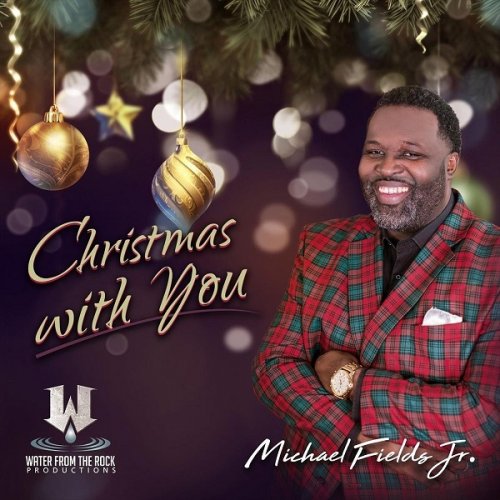
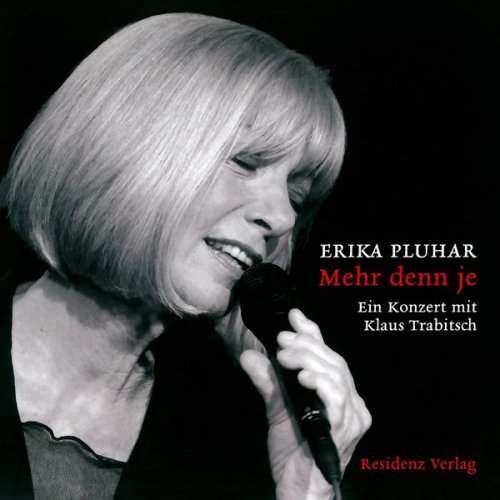
![Victoria Port - Barefoot In The Garden (2025) [Hi-Res] Victoria Port - Barefoot In The Garden (2025) [Hi-Res]](https://img.israbox.com/img/2025-12/29/ewzd0szcsnv1f02bzk1gno02h.jpg)
![Nighthawks - Paris Dakar (2025) [Hi-Res] Nighthawks - Paris Dakar (2025) [Hi-Res]](https://www.dibpic.com/uploads/posts/2025-12/1767093398_folder.jpg)
